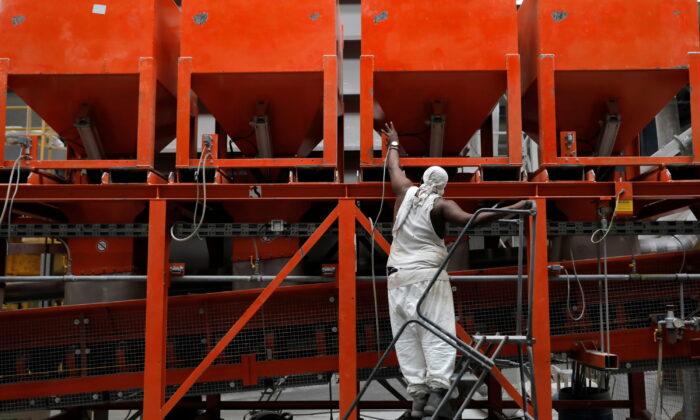WASHINGTON—New orders for U.S.-made goods fell in February, likely because of persistent shortages of materials and a shift in spending back to services, but manufacturing remains supported by low inventories at businesses.
The Commerce Department said on Monday that factory orders fell 0.5 percent in February. Data for January was revised slightly higher to show orders rising 1.5 percent instead of 1.4 percent as previously reported. February’s decrease in factory orders was in line with economists’ expectations.
Manufacturing accounts for 12 percent of the U.S. economy. An Institute for Supply Management (ISM) survey last Friday showed its index of national factory activity declined in March to the lowest level since September 2020, with factories reporting no let-up in supply chain challenges.
The global supply crunch has been worsened by Russia’s war against Ukraine, which has sent prices for commodities like oil and wheat soaring. Though demand is reverting back to services, business inventories remain lean, which should keep factories humming. Government data last week showed that consumer spending on services increased by the most in seven months in February.
The decline in factory orders in February was led by a 5.3 percent tumble in transportation equipment. Orders for motor vehicles and parts fell 0.6 percent, likely reflecting an ongoing global semiconductor shortage, which has hampered production.
There were also sharp decreases in orders for machinery as well as computers and electronic products. But orders for electrical equipment, appliances, and components rose 0.6 percent. Orders for furniture and related products rebounded 2.7 percent.
Shipments of manufactured goods rose 0.6 percent after advancing 1.4 percent in January. Inventories at factories climbed 0.6 percent. Unfilled orders gained 0.4 percent after increasing 0.9 percent in the prior month.
The Commerce Department also reported that orders for non-defense capital goods, excluding aircraft, which are seen as a measure of business spending plans on equipment, slipped 0.2 percent instead of 0.3 percent as previously reported last month.
Shipments of these so-called core capital goods, which are used to calculate business equipment spending in the gross domestic product report, rose 0.3 percent in February instead of the previously reported 0.5 percent.





